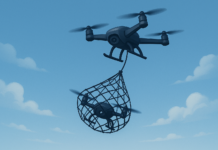This post is also available in:
 עברית (Hebrew)
עברית (Hebrew)
As we previously published, South Korea’s Joint Chiefs of Staff (JCS) did not think that systems such as Iron Dome would be suitable for Seoul’s mountainous terrain – to the article – however, looking at the whole picture, the solution offered by Raytheon may fulfill Seoul’s defense needs, according to forbes.com.
Being within the range of North Korean artillery and short-range rockets, South Korea’s capital Seoul has been vulnerable to non-nuclear retaliation, a considerable challenge also to its ally, the US. There are several defensive options for dealing with longer-range missiles, but none of them is configured to deal with artillery shells, and the rocket launchers located right over the border from Seoul don’t loft their munitions to an altitude where systems like Thaad could be effective. So protecting Seoul against short-range threats is difficult, even if nuclear weapons never come into play.
Raytheon recently displayed an effective solution at the annual exposition of the Association of the U.S. Army AUSA in Washington that could be available for deployment within months.
The company’s SkyHunter system known as Iron Dome — the short-range air and missile defense system that Israel activated in 2011 to counter rockets fired by Hezbollah forces in neighboring Lebanon. Initially funded by the Israeli government and later by the U.S., Iron Dome has an impressive success rate of over 90% in countering short-range ballistic threats, and can also cope with air-breathing threats such as unmanned aircraft (drones).
Iron Dome has successfully intercepted over 1,500 hostile munitions headed for Israel and is designed to defend precisely the kind of target the South Korean capital represents — a densely populated urban area where incoming threats must be quickly sorted out and prioritized to prevent major loss of life.
Its radar, built by Israeli company Elta, can track the trajectories of over a thousand targets simultaneously, directing fast-responding interceptor missiles to destroy the targets that pose the greatest danger.
Raytheon was already teamed with Israeli defense firm Rafael to make components for Iron Dome, but what it has now done is repackage the system for sale to the U.S. military as SkyHunter. The company says it can deliver a full-up system in as little as four months; given two years, it can produce all the necessary parts — the radar, the interceptor missiles, the battle management equipment — in the U.S. This is years earlier than other U.S.-made solutions would be available for use in combat.
A single SkyHunter battery can protect most of metropolitan Seoul, scattering its truck-mounted launchers to provide optimum coverage with 120 interceptors. The whole system is managed using secure wireless links, and its radar can detect short-range threats to a distance well beyond the DMZ. Raytheon says that the cost per interception is less than any comparable system, and there are few defensive systems in the world that could accomplish SkyHunter’s missions at any cost.
Critics might argue that a few defensive batteries would be overwhelmed by the North’s artillery and rocket forces, which reportedly are the biggest in the world. However, the vast majority of North Korea’s short-range fires cannot reach Seoul either because of their limited range or because of where they are deployed. The role of SkyHunter in a Korean conflict would be to counter incoming weapons headed for the highest-value or most heavily-populated targets while U.S. and South Korean air power is applied to suppress the North’s fires, supply lines and command links.
According to forbes.com, the SkyHunter combined with longer-range defensive systems such as Patriot and Thaad could provide Seoul with layered protection sufficient to intercept virtually any type of weapon Pyongyang might launch against the South Korean capital. SkyHunter looks to be the only combat-proven option that could be on the ground and in action there by next spring. So chances are, U.S. investment in Israel’s defense is going to pay dividends few observers could have imagined when Iron Dome was first conceived.


























